Adrian Popescu
Université Paris-Saclay, CEA, List, Palaiseau, France
CEA-LIST at CheckThat! 2025: Evaluating LLMs as Detectors of Bias and Opinion in Text
Jul 10, 2025Abstract:This paper presents a competitive approach to multilingual subjectivity detection using large language models (LLMs) with few-shot prompting. We participated in Task 1: Subjectivity of the CheckThat! 2025 evaluation campaign. We show that LLMs, when paired with carefully designed prompts, can match or outperform fine-tuned smaller language models (SLMs), particularly in noisy or low-quality data settings. Despite experimenting with advanced prompt engineering techniques, such as debating LLMs and various example selection strategies, we found limited benefit beyond well-crafted standard few-shot prompts. Our system achieved top rankings across multiple languages in the CheckThat! 2025 subjectivity detection task, including first place in Arabic and Polish, and top-four finishes in Italian, English, German, and multilingual tracks. Notably, our method proved especially robust on the Arabic dataset, likely due to its resilience to annotation inconsistencies. These findings highlight the effectiveness and adaptability of LLM-based few-shot learning for multilingual sentiment tasks, offering a strong alternative to traditional fine-tuning, particularly when labeled data is scarce or inconsistent.
Analyzing Political Bias in LLMs via Target-Oriented Sentiment Classification
May 26, 2025Abstract:Political biases encoded by LLMs might have detrimental effects on downstream applications. Existing bias analysis methods rely on small-size intermediate tasks (questionnaire answering or political content generation) and rely on the LLMs themselves for analysis, thus propagating bias. We propose a new approach leveraging the observation that LLM sentiment predictions vary with the target entity in the same sentence. We define an entropy-based inconsistency metric to encode this prediction variability. We insert 1319 demographically and politically diverse politician names in 450 political sentences and predict target-oriented sentiment using seven models in six widely spoken languages. We observe inconsistencies in all tested combinations and aggregate them in a statistically robust analysis at different granularity levels. We observe positive and negative bias toward left and far-right politicians and positive correlations between politicians with similar alignment. Bias intensity is higher for Western languages than for others. Larger models exhibit stronger and more consistent biases and reduce discrepancies between similar languages. We partially mitigate LLM unreliability in target-oriented sentiment classification (TSC) by replacing politician names with fictional but plausible counterparts.
Fairer Analysis and Demographically Balanced Face Generation for Fairer Face Verification
Dec 04, 2024Abstract:Face recognition and verification are two computer vision tasks whose performances have advanced with the introduction of deep representations. However, ethical, legal, and technical challenges due to the sensitive nature of face data and biases in real-world training datasets hinder their development. Generative AI addresses privacy by creating fictitious identities, but fairness problems remain. Using the existing DCFace SOTA framework, we introduce a new controlled generation pipeline that improves fairness. Through classical fairness metrics and a proposed in-depth statistical analysis based on logit models and ANOVA, we show that our generation pipeline improves fairness more than other bias mitigation approaches while slightly improving raw performance.
Quantifying User Coherence: A Unified Framework for Cross-Domain Recommendation Analysis
Oct 03, 2024



Abstract:The effectiveness of Recommender Systems (RS) is closely tied to the quality and distinctiveness of user profiles, yet despite many advancements in raw performance, the sensitivity of RS to user profile quality remains under-researched. This paper introduces novel information-theoretic measures for understanding recommender systems: a "surprise" measure quantifying users' deviations from popular choices, and a "conditional surprise" measure capturing user interaction coherence. We evaluate 7 recommendation algorithms across 9 datasets, revealing the relationships between our measures and standard performance metrics. Using a rigorous statistical framework, our analysis quantifies how much user profile density and information measures impact algorithm performance across domains. By segmenting users based on these measures, we achieve improved performance with reduced data and show that simpler algorithms can match complex ones for low-coherence users. Additionally, we employ our measures to analyze how well different recommendation algorithms maintain the coherence and diversity of user preferences in their predictions, providing insights into algorithm behavior. This work advances the theoretical understanding of user behavior and practical heuristics for personalized recommendation systems, promoting more efficient and adaptive architectures.
Combining Objective and Subjective Perspectives for Political News Understanding
Aug 20, 2024
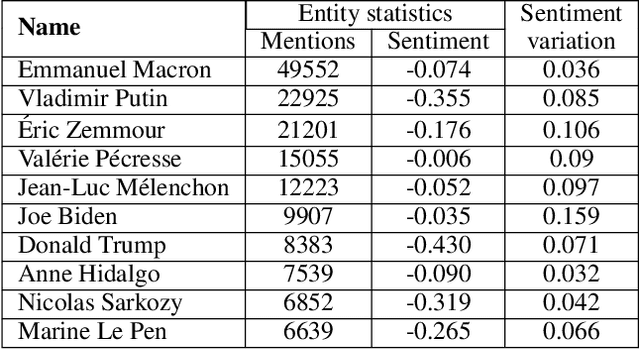
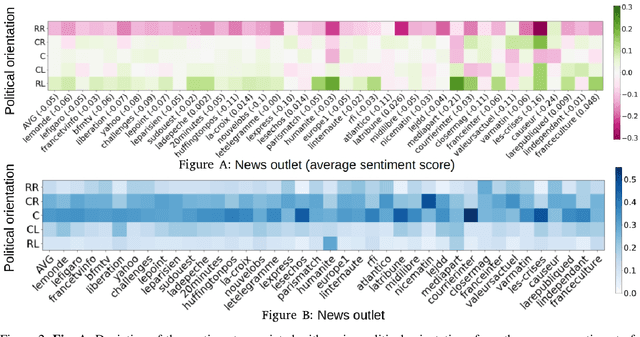

Abstract:Researchers and practitioners interested in computational politics rely on automatic content analysis tools to make sense of the large amount of political texts available on the Web. Such tools should provide objective and subjective aspects at different granularity levels to make the analyses useful in practice. Existing methods produce interesting insights for objective aspects, but are limited for subjective ones, are often limited to national contexts, and have limited explainability. We introduce a text analysis framework which integrates both perspectives and provides a fine-grained processing of subjective aspects. Information retrieval techniques and knowledge bases complement powerful natural language processing components to allow a flexible aggregation of results at different granularity levels. Importantly, the proposed bottom-up approach facilitates the explainability of the obtained results. We illustrate its functioning with insights on news outlets, political orientations, topics, individual entities, and demographic segments. The approach is instantiated on a large corpus of French news, but is designed to work seamlessly for other languages and countries.
Toward Fairer Face Recognition Datasets
Jun 24, 2024



Abstract:Face recognition and verification are two computer vision tasks whose performance has progressed with the introduction of deep representations. However, ethical, legal, and technical challenges due to the sensitive character of face data and biases in real training datasets hinder their development. Generative AI addresses privacy by creating fictitious identities, but fairness problems persist. We promote fairness by introducing a demographic attributes balancing mechanism in generated training datasets. We experiment with an existing real dataset, three generated training datasets, and the balanced versions of a diffusion-based dataset. We propose a comprehensive evaluation that considers accuracy and fairness equally and includes a rigorous regression-based statistical analysis of attributes. The analysis shows that balancing reduces demographic unfairness. Also, a performance gap persists despite generation becoming more accurate with time. The proposed balancing method and comprehensive verification evaluation promote fairer and transparent face recognition and verification.
Recommendation of data-free class-incremental learning algorithms by simulating future data
Mar 26, 2024



Abstract:Class-incremental learning deals with sequential data streams composed of batches of classes. Various algorithms have been proposed to address the challenging case where samples from past classes cannot be stored. However, selecting an appropriate algorithm for a user-defined setting is an open problem, as the relative performance of these algorithms depends on the incremental settings. To solve this problem, we introduce an algorithm recommendation method that simulates the future data stream. Given an initial set of classes, it leverages generative models to simulate future classes from the same visual domain. We evaluate recent algorithms on the simulated stream and recommend the one which performs best in the user-defined incremental setting. We illustrate the effectiveness of our method on three large datasets using six algorithms and six incremental settings. Our method outperforms competitive baselines, and performance is close to that of an oracle choosing the best algorithm in each setting. This work contributes to facilitate the practical deployment of incremental learning.
FeTrIL++: Feature Translation for Exemplar-Free Class-Incremental Learning with Hill-Climbing
Mar 12, 2024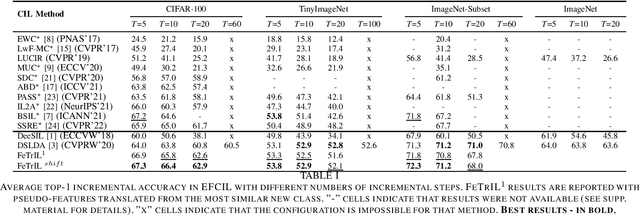
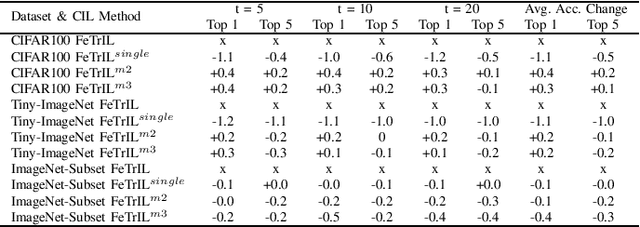
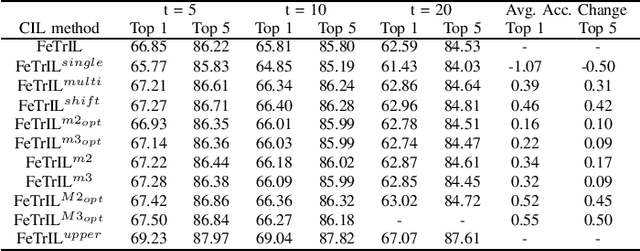
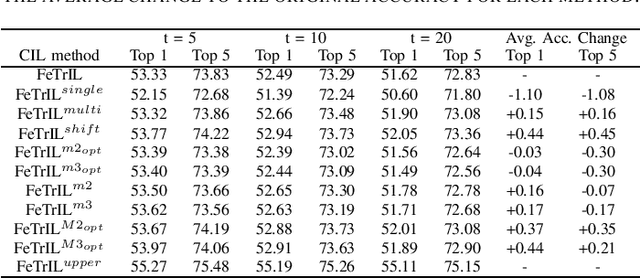
Abstract:Exemplar-free class-incremental learning (EFCIL) poses significant challenges, primarily due to catastrophic forgetting, necessitating a delicate balance between stability and plasticity to accurately recognize both new and previous classes. Traditional EFCIL approaches typically skew towards either model plasticity through successive fine-tuning or stability by employing a fixed feature extractor beyond the initial incremental state. Building upon the foundational FeTrIL framework, our research extends into novel experimental domains to examine the efficacy of various oversampling techniques and dynamic optimization strategies across multiple challenging datasets and incremental settings. We specifically explore how oversampling impacts accuracy relative to feature availability and how different optimization methodologies, including dynamic recalibration and feature pool diversification, influence incremental learning outcomes. The results from these comprehensive experiments, conducted on CIFAR100, Tiny-ImageNet, and an ImageNet-Subset, under-score the superior performance of FeTrIL in balancing accuracy for both new and past classes against ten contemporary methods. Notably, our extensions reveal the nuanced impacts of oversampling and optimization on EFCIL, contributing to a more refined understanding of feature-space manipulation for class incremental learning. FeTrIL and its extended analysis in this paper FeTrIL++ pave the way for more adaptable and efficient EFCIL methodologies, promising significant improvements in handling catastrophic forgetting without the need for exemplars.
Continual Learning: Applications and the Road Forward
Nov 21, 2023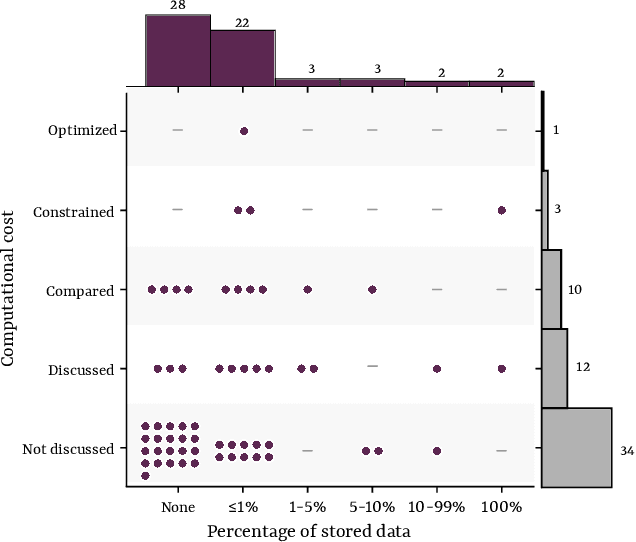
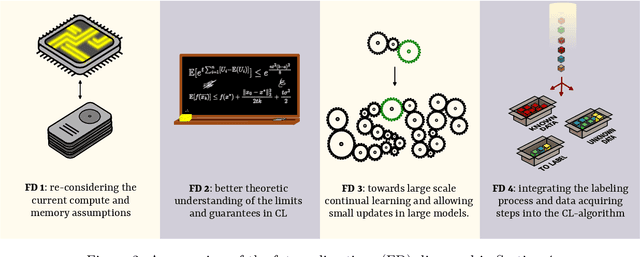
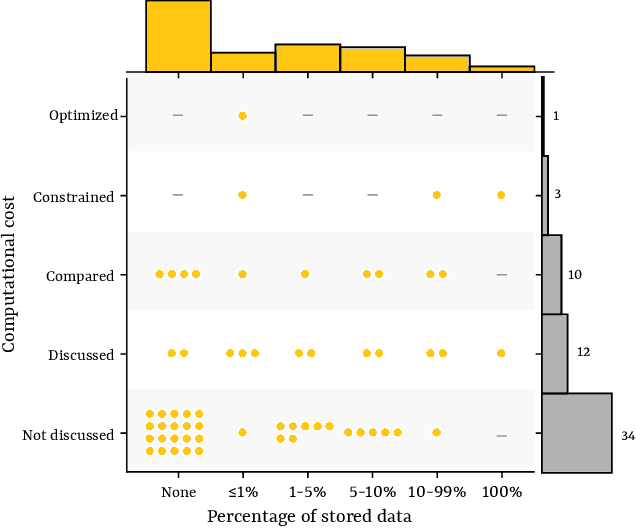
Abstract:Continual learning is a sub-field of machine learning, which aims to allow machine learning models to continuously learn on new data, by accumulating knowledge without forgetting what was learned in the past. In this work, we take a step back, and ask: "Why should one care about continual learning in the first place?". We set the stage by surveying recent continual learning papers published at three major machine learning conferences, and show that memory-constrained settings dominate the field. Then, we discuss five open problems in machine learning, and even though they seem unrelated to continual learning at first sight, we show that continual learning will inevitably be part of their solution. These problems are model-editing, personalization, on-device learning, faster (re-)training and reinforcement learning. Finally, by comparing the desiderata from these unsolved problems and the current assumptions in continual learning, we highlight and discuss four future directions for continual learning research. We hope that this work offers an interesting perspective on the future of continual learning, while displaying its potential value and the paths we have to pursue in order to make it successful. This work is the result of the many discussions the authors had at the Dagstuhl seminar on Deep Continual Learning, in March 2023.
An Analysis of Initial Training Strategies for Exemplar-Free Class-Incremental Learning
Aug 22, 2023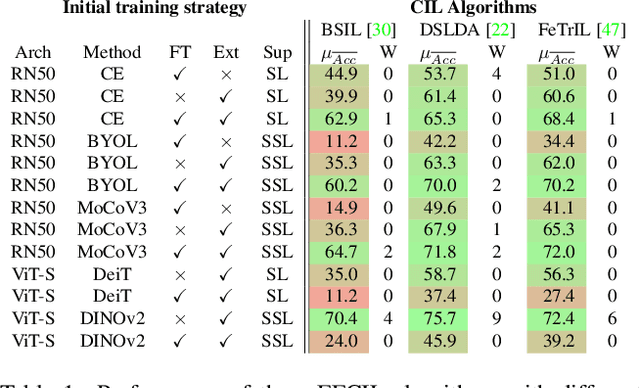
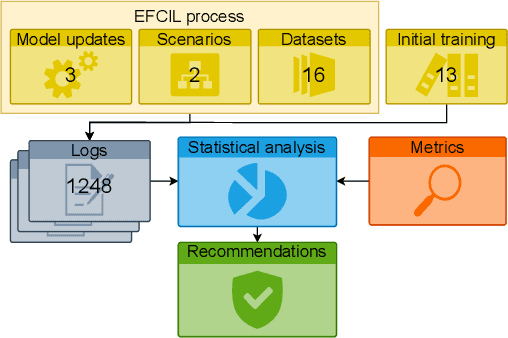
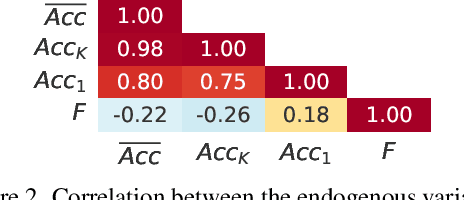
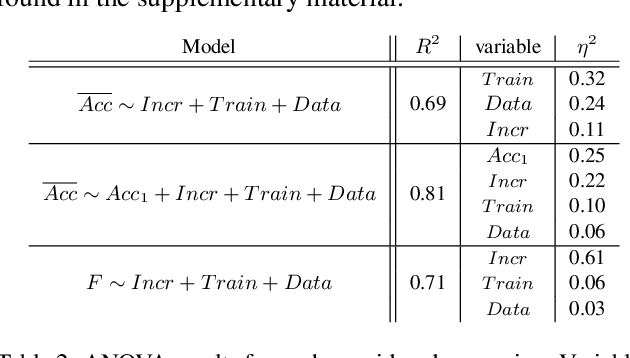
Abstract:Class-Incremental Learning (CIL) aims to build classification models from data streams. At each step of the CIL process, new classes must be integrated into the model. Due to catastrophic forgetting, CIL is particularly challenging when examples from past classes cannot be stored, the case on which we focus here. To date, most approaches are based exclusively on the target dataset of the CIL process. However, the use of models pre-trained in a self-supervised way on large amounts of data has recently gained momentum. The initial model of the CIL process may only use the first batch of the target dataset, or also use pre-trained weights obtained on an auxiliary dataset. The choice between these two initial learning strategies can significantly influence the performance of the incremental learning model, but has not yet been studied in depth. Performance is also influenced by the choice of the CIL algorithm, the neural architecture, the nature of the target task, the distribution of classes in the stream and the number of examples available for learning. We conduct a comprehensive experimental study to assess the roles of these factors. We present a statistical analysis framework that quantifies the relative contribution of each factor to incremental performance. Our main finding is that the initial training strategy is the dominant factor influencing the average incremental accuracy, but that the choice of CIL algorithm is more important in preventing forgetting. Based on this analysis, we propose practical recommendations for choosing the right initial training strategy for a given incremental learning use case. These recommendations are intended to facilitate the practical deployment of incremental learning.
 Add to Chrome
Add to Chrome Add to Firefox
Add to Firefox Add to Edge
Add to Edge